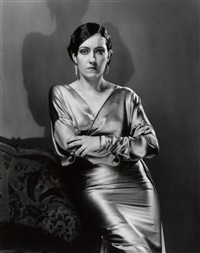Edward Steichen
(American, 1879–1973)
Biography
Edward Steichen was a Luxembourg-born American artist and gallerist who was a key figure in the development of photography. Steichen notably served as The Museum of Modern Art’s director of photography from 1945 until 1962. In his own photographs, such as The Flatiron (1904), the artist experimented with coloring techniques developed by the French Lumière Brothers. “Photography is a medium of formidable contradictions. It is both ridiculously easy and almost impossibly difficult,” he once explained. Born Éduard Jean Steichen on March 27, 1879 in Bivange, Luxembourg, his family immigrated to the United States in 1880. During the 1890s, Steichen worked as an apprentice lithographer, pursued painting, and began experimenting with photography. After becoming a naturalized American citizen in 1900, the young artist’s photographs gained the attention of Alfred Stieglitz that same year. He went on to co-found the journal Camera Work with Stieglitz, and became director of the U.S. Naval Photographic Institute during World War II. During his tenure at The Museum of Modern Art, he mounted the renowned exhibition “The Family of Man,” which consisted of over 500 photos from 68 countries. Steichen died on March 25, 1973 in Redding, CT. Today, the artist’s works are found in the collections of the Art Institute of Chicago, the J. Paul Getty Museum in Los Angeles, and the National Gallery of Art in Washington, D.C., among others.
Edward Steichen
(1,743 results)
























